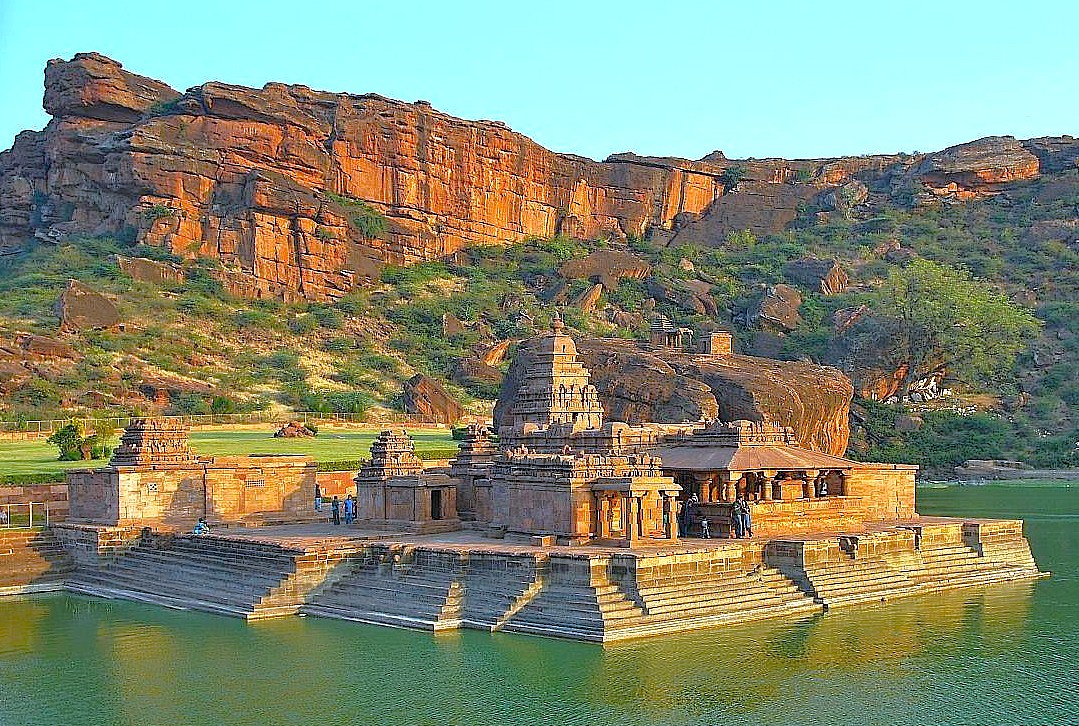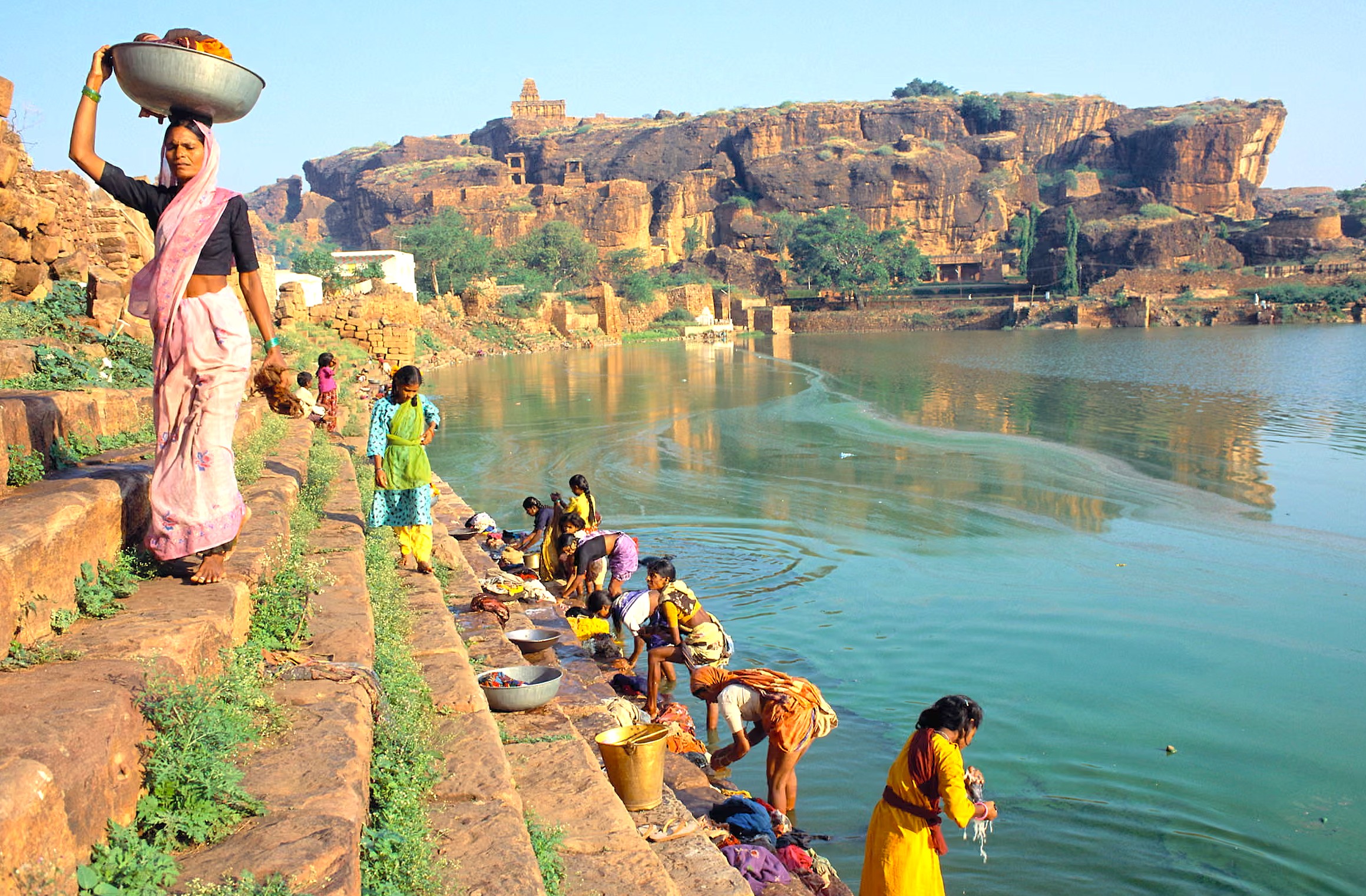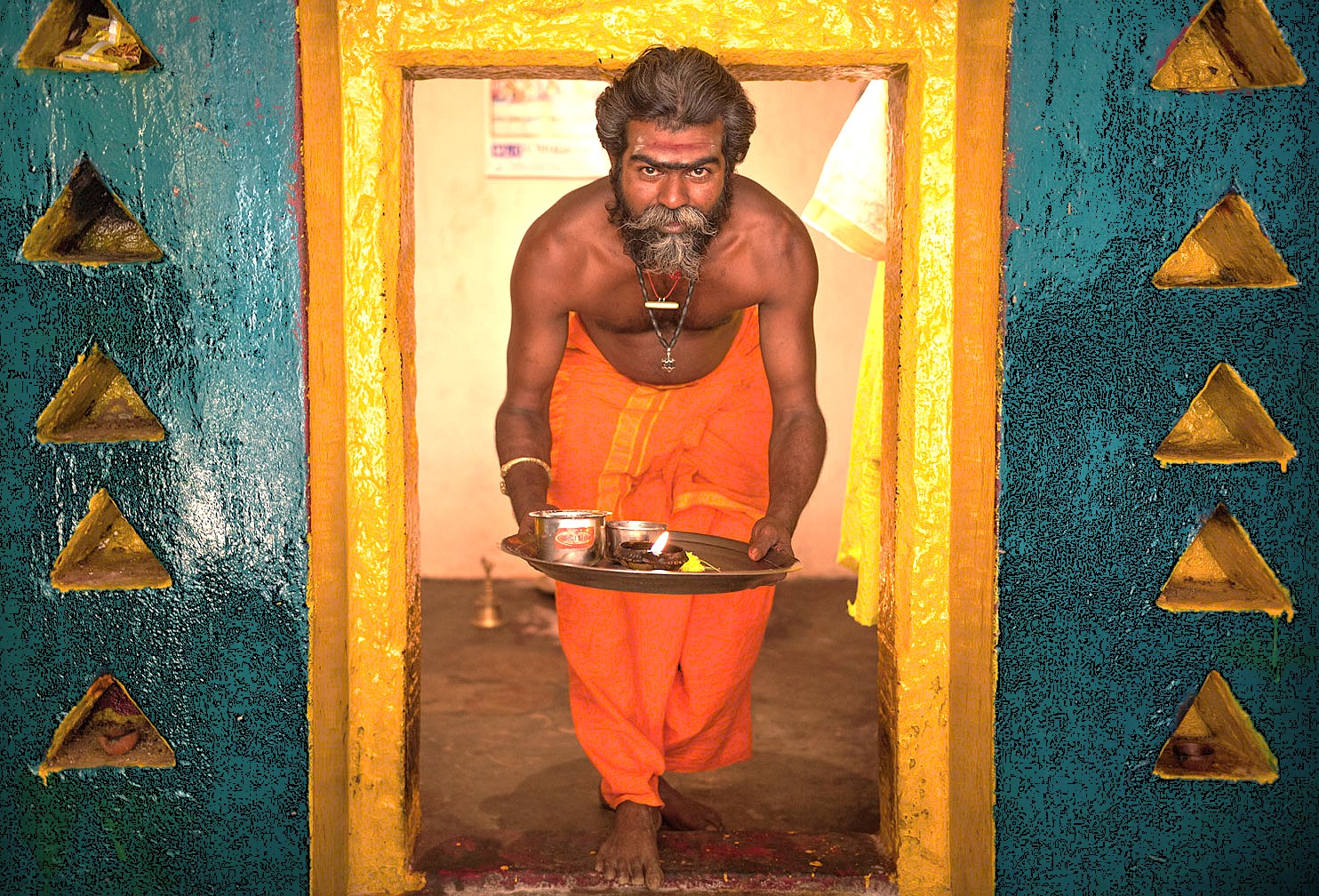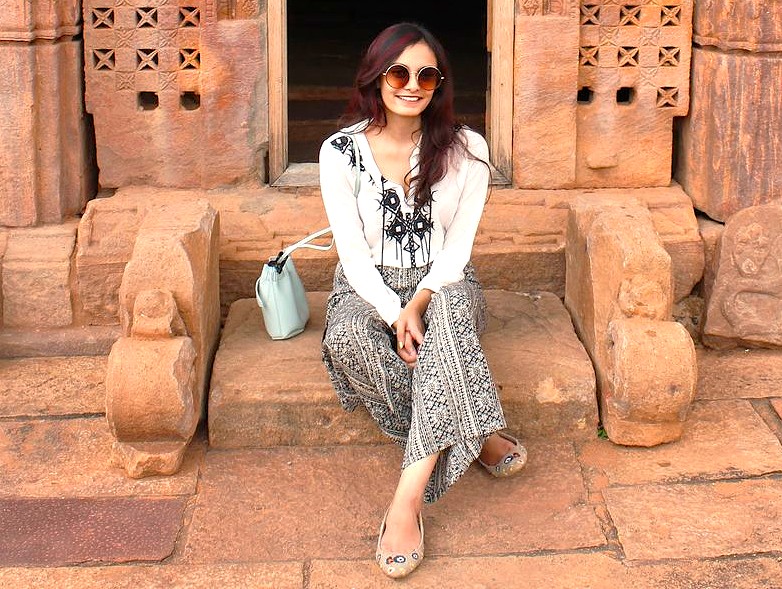Echoes of Ancient Lands
Badami Karnataka India
Mother Masala Tours
The Ancient Capital of the Chalukya Dynasty
Badami Karnataka India. Amidst the striking red sandstone cliffs of the Bagalkot district, the town stands as a testament to the enduring legacy of the Chalukya Dynasty, one of the most influential ruling houses in the history of the Deccan region. Founded in the 6th century, specifically around 540 CE, Badami served as the capital of this significant dynasty under its first ruler, Pulakeshin I. The Chalukyas were instrumental in shaping the political landscape of South India, forging alliances and engaging in battles that would reverberate through history. The town is home to approximately 30,000 residents, many of whom are descendants of the original inhabitants who embraced the rich cultural traditions fostered by the royalty.

Badami Karnataka India: Sacred Spaces
The surroundings of Badami Karnataka are enriched with numerous elements that represent its historical significance. Here, you can find artifacts such as ancient inscriptions, sculptures, and coins, all of which hold great importance in understanding the socio-political structure of the Chalukyan era. The Badami Archaeological Museum, established in 1976, houses many of these artifacts, accentuating the cultural heritage of the region. Among the notable artifacts are the intricately carved hero stones, which commemorate valiant warriors, illustrating their significance during the Chalukyan period. The museum also features early Kannada inscriptions that provide insights into the development of language and script in the region.
Ancient Mosaics: Impeccable Craftsmanship

The skilled craftsmanship found in this region is evident in the numerous stone sculptures and temples that adorn its landscape. The artisans of the Chalukyan Dynasty, particularly between the 6th and 12th centuries, demonstrated an impressive command of their craft, utilizing locally sourced materials such as red sandstone and granite. One of the most striking examples comes from the Bhutanatha Temple, constructed during the 7th century, showcasing exquisite carvings that are testament to the artisans' attention to detail and dedication.
The Pulse of the Local Community
Badami Karnataka India. The local community here reflects a warm hospitality that invites those who explore the area to connect on a deeper level. Residents take immense pride in their heritage and actively participate in the preservation of cultural traditions that have been passed down through generations. The mood is one of engagement, as locals and those interested in the history of Badami share stories, recipes, and customs.
Capturing the Magic: A Photographic Haven

Badami offers ample opportunities for photography, from its stunning sandstone formations to the intricately carved temples. Unique features, such as the reflections of ancient temple structures in the serene waters, create picturesque moments for us. These scenes allow us to capture the very essence of this rich and compelling history. We find many beautiful subjects to photograph in this special place. The ancient architecture stands majestically against the natural rock formations and vibrant sky. Every turn reveals a new view, waiting to be caught through our lens.
A Culinary Journey: Savor the Flavour
The culinary traditions of the region have deep roots, with specialties that reflect the local produce and flavors unique to Karnataka. One staple dish is Bisi Bele Bath, prepared with rice, lentils, and a mix of fresh vegetables, seasoned with an aromatic blend of spices. This dish is often served with crispy poppadoms and pickles, enhancing the overall flavor profile. The preparation involves cooking rice and lentils together with ingredients like carrots, peas, and tamarind, which adds a distinctive taste.
Festivals of Devotion: Honouring the Sacred and the Divine

Mahashivaratri -= one of the most significant clebrations. Usually occurs in February or March, honoring Shiva through night-long vigils, prayers, and rituals. Locals come together to decorate temples, prepare offerings, and engage in cultural performances that breathe life into the celebrations. The atmosphere is lively and filled with a sense of devotion, as community members participate in activities. Figures from mythology, such as Nandi bull, and various deities, take center stage, emphasizing the connection between the divine and rhe locals.
Resilience and Renewal: Overcoming Adversity’s Challenges
Badami Karnataka India. The historical journey of this town includes numerous challenges that have shaped its identity. One notable event was the invasion by the Rashtrakutas during the early 8th century, which caused extensive destruction and altered the socio-political landscape. Such invasions prompted the local population to rebuild and fortify their structures, showcasing resilience in the face of adversity. In addition, devastating floods in 1935 prompted a community response that focused on rebuilding infrastructure and restoring homes.
The Connection with the Gods

Badami Karnataka India. In local temples, Shiva is the deity, linked with creation and transformation. Around town, stories describe his influence in daily life and the rhythm of seasons. We visit these sites to learn local customs and understand practices shaping local gatherings. Guides explain processions, offerings, and architecture to us, revealing how traditions adapt across neighborhoods and time. One tale describes Shiva disguised as a wandering sage during a severe drought. He guides villagers toward water sources, and rainfall soon returns.
Serendipitous Meetings: Beyond the Main Path
As we walk around town, we find countless opportunities to encounter unique experiences. Small workshops where artisans craft traditional goods, including pottery and textiles, dot the landscape, inviting us to connect with the creators and learn about their craft. Engaging with these artisans allows us to gain insights into the meticulous processes and cultural significance behind their creations. Local markets, often swamped with activity, present a lively atmosphere where we can discover everything from fresh produce to handmade souvenirs.
Urban Legends: Strange Sightings, Myths and Mysteries

Local folklore is rich with legends that add to the cultural tapestry of the area. One story involves the hidden treasure believed to be buried under the sandstone cliffs, said to belong to a long-lost ruler of the Chalukyan Dynasty. Rumor has it that only a worthy soul can uncover this treasure, stirring the imaginations of both locals and travelers alike. Another tale talks about the haunted temples, where ghostly apparitions of former priests are said to roam, ensuring that the community's traditions are upheld long after their passing.
India, The View Is Better When You're Actually There, Join Us
Badami, a unique stop, offering stone temples and ancient caves that reveal their long history. We explore winding paths between sandstone cliffs, with views that stretch across calm waters and lakesides. Warm sunlight highlights carvings and faded murals. Every corner brings new details to light, with calm spaces and hidden shrines waiting quietly. Monkeys cross old steps, and eagles circle in the bright sky. This place is off the usual tourist path, making each walk peaceful and relaxed. Local life moves gently, blending old and new. Street vendors offer snacks as we wander, and small boats drift nearby. Every visit is different as Badami slowly shares its stories.
Symphony of Generosity: Offerings from Wanderers to Residents

We walk through narrow lanes where voices mix easily with temple bells that drift out of open windows. We see markets filled with bright fabrics and jewelry spread across stalls, shining in the sunlight. In small workshops, we watch artisans shape clay or carve wood, continuing skills passed through many hands. We try snacks from street vendors as children move between shops and homes. Each corner brings something simple and familiar to us. As we buy small crafts, we help families carry on their work and daily routines. We notice how old traditions remain part of daily living, making each day in this town blend the past with the present.